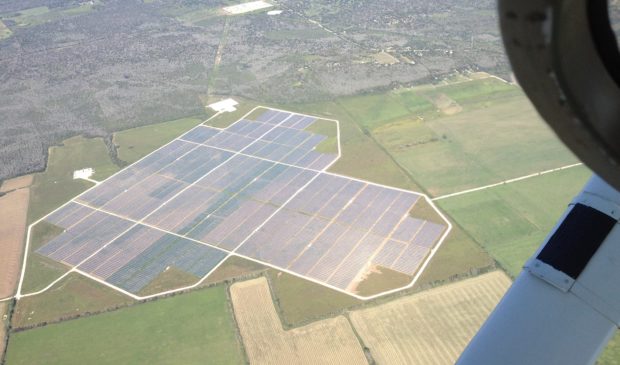Austin Energy price on coal energy reduces emissions 20 percent since March
Thursday, August 20, 2020 by
Ryan Thornton In a little over four months, Austin Energy’s carbon pricing program, REACH (Reduce Emissions Affordably for Climate Health) has cut the utility’s carbon emissions by roughly 20 percent, saving more than 480,000 tons of CO2 from the atmosphere since the end of March.
Looking ahead to the end of 2020, Charles Dickerson, chief operating officer at Austin Energy, said the utility expects the program to have an even larger impact, resulting in an overall 30 percent reduction in CO2 emissions this year.
“This is a really good story for the city, for the environment and for the strategic direction that City Council has us executing,” Dickerson told Council’s Utility Oversight Committee on Wednesday.
Austin Energy predicted it would emit over 2.5 million tons of CO2 at this point in the year, but has emitted just a little over 1.5 million tons as of Aug. 5. While about half of that difference is related to the Covid-19 pandemic and changing customer behaviors, Dickerson said the other half is definitively attributable to REACH.
REACH adds a small price to the cost of energy coming from the Fayette Power Project coal plant, similar to a carbon penalty, enticing more customers to choose alternative sources of energy like wind and solar. The program is an element of the Resource, Generation and Climate Protection Plan to 2030 adopted by Council in March. The plan sets out a variety of strategies to increase the city’s carbon-free energy generation from under 50 percent today to 86 percent by 2026 and 100 percent by 2035.
The utility expects REACH to reduce its carbon emissions by 4 million tons by the time the city terminates coal operations at Fayette Power Project by the end of 2022. From there, the program will cut emissions by about 8 percent each year until 2035.
“In hindsight, in looking backwards, it’s such a simple and elegant action to take that could have, as we see now, such an incredibly dramatic impact on the carbon footprint,” Mayor Steve Adler said. “So it was clever, it was simple and it actually is working in the way you said it would.”
Austin Energy’s carbon fee is about $4 per ton, relatively low, but Dickerson said the utility is conscious of concerns over affordability. As of now, the utility is only applying the carbon price to coal power in order to maintain enough generation flexibility to keep rates affordable. Once the city exits Fayette Power Project, it will begin adding the carbon price to natural gas generation as well.
“One of the things we are balancing this approach with is the affordability, because for every ton that we don’t emit that’s a lost opportunity to sell power into the market, which is fine but we’re balancing that,” Dickerson said.
“I had a lot of doubts that we were going to be able to reach that but I went ahead and went with you guys,” Council Member Pio Renteria said. “I’m glad that the report you’re showing is positive.”
Recurrent Energy, Austin Energy’s partner in the 144-megawatt Pflugerville Solar Project, broke ground on the solar farm in Travis County on Tuesday. Once complete, the facility will help the utility phase out non-renewable sources and provide enough electricity for the equivalent of about 25,000 homes.
Photo made available through a Creative Commons license.
The Austin Monitor’s work is made possible by donations from the community. Though our reporting covers donors from time to time, we are careful to keep business and editorial efforts separate while maintaining transparency. A complete list of donors is available here, and our code of ethics is explained here.
You're a community leader
And we’re honored you look to us for serious, in-depth news. You know a strong community needs local and dedicated watchdog reporting. We’re here for you and that won’t change. Now will you take the powerful next step and support our nonprofit news organization?









